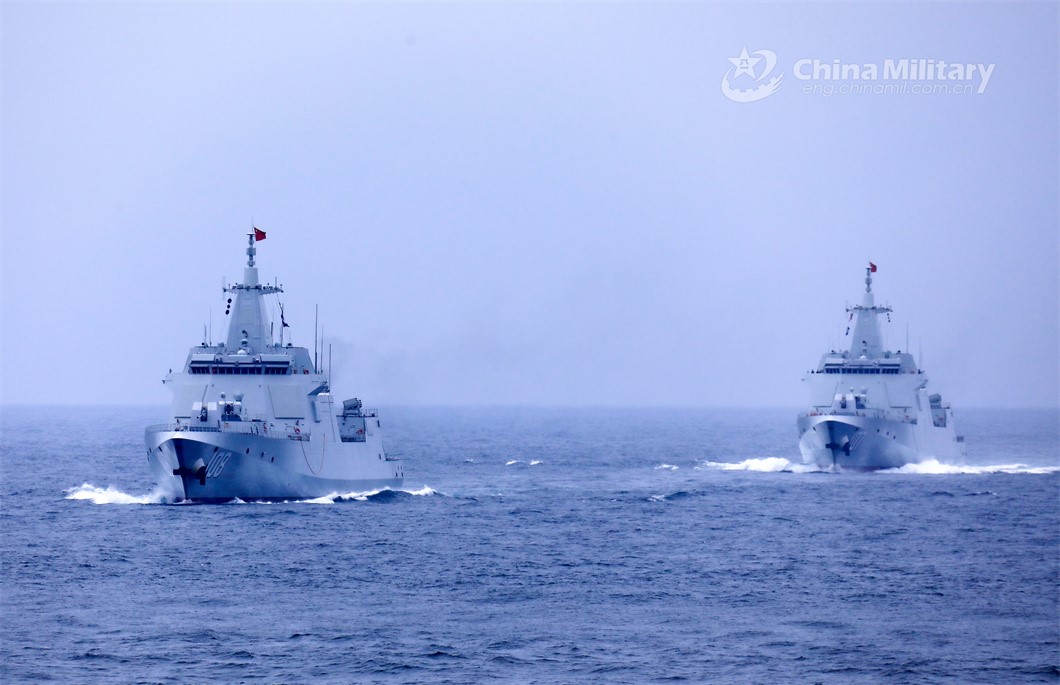From the Caribbean to the Mediterranean to the Pacific, the naval forces of Russia and China have challenged the once-dominant position of the United States.
On July 18, U.S. Army Gen. Laura J. Richardson, in a speech at the Aspen Institute, warned that Russian warships have been making port visits to Cuba, Venezuela and Nicaragua, and 22 nations in the U.S. Southern Command’s area of responsibility has signed on to China’s Belt and Road Initiative, the commander of Southcom told attendees of the Aspen Security Forum.
Army Gen. Laura J. Richardson said the nations that have signed on to the Chinese initiative don’t see the investments the U.S. has been making in their countries. “All they see are the Chinese cranes,” she said. “These projects are in the billions of dollars. … They are big-time projects.” Richardson said it would be OK with her if those investments were for doing good in the hemisphere. “But it makes me a little suspicious when it’s in the critical infrastructure.” Critical infrastructure, she said, includes deep-water ports, cybersecurity, energy and space. “I worry about the dual use nature of that. These are state-owned enterprises by a communist government. I worry about the flipping of that to a military application,” Richardson said, referring to China.
Regarding the Russian port visits, Richardson said U.S. vessels have been shadowing those vessels to ensure the safety and security of the United States. Also, the Russians continue to make high-level government visits to Venezuela, Cuba and Nicaragua with their foreign affairs minister and the head of the Russian legislative body, she said, adding that the U.S. could be doing more in its own government exchanges.
“I really believe that economic security and national security go hand in hand here in this hemisphere, and we have got to work both of them together very, very quickly,” she said.
In the Mediterranean, according to the Bulgarian Military A fleet, including the missile cruiser Varyag and the frigate Marshal Shaposhnikov, has successfully navigated the Suez Canal, transitioning from the Mediterranean Sea to the Red Sea, as confirmed by the Pacific Fleet [PF] on Wednesday.
The authoritative GIS Reports notes that “In the crucial Indo-Pacific, the tide has changed dramatically against America. the balance of naval power in the Western Pacific has been altered in favor of the Chinese Navy. For instance, the U.S. Navy went from having a 76-warship advantage over China in 2005 to having a 39-combatant deficiency in 2023, based on similar ship and submarine comparisons. That is a swing of 115 naval platforms in 23 years. This is a strategic trend that will continue uninterrupted for at least the next decade.”
Rep. Mike Rogers has previously pointed out that The Biden Administration’s 30-year ship-building plan reduces the Navy’s ability to protect its aircraft-carrier strike groups and eliminate enemy minefields, reduces the Marine Corps’ ability to conduct forcible-entry missions, and reduces by almost 10 percent the Navy’s capacity to launch missiles. Public estimates indicate that China will eventually develop a global force of submarines capable of launching ballistic missiles, posing an obvious risk to the U.S. China’s surface-combatant forces already greatly exceed that of the U.S.
Photo: Vessels attached to a flotilla with the navy under the PLA Southern Theater Command sail toward the designated area during a comprehensive combat training exercise in late June, 2024. (eng.chinamil.com.cn/Photo by Huang Jiacheng and Wang Jian)
